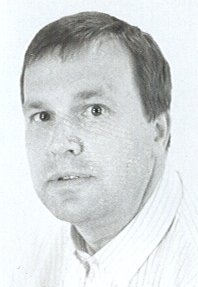Harry Ganzeboom, born in Deventer, the Netherlands, in 1953. Ph.D. from Utrecht University. Professor of Sociology at Utrecht University.
Fellow (1 September 1996 – 30 June 1997)
The main purpose of my stay at NIAS was to make progress on the large scale project on status attainment patterns in comparative perspective, that I am conducting together with Donald Treiman. Our comparative perspective covers about forty countries and most of the 20th century. We are working on a series of papers on this subject that will be collected in one volume. Some of subjects we have covered are educational attainment, entry into the labour market, occupational careers, and the status attainment of men and women. We want to answer the question how these things have changed over time and how they differ between societies. Our main dimensions of comparison are to contrast developed and lesser developed societies, and market and state-socialist societies. In addition, we are interested in a number of methodological issues, such as the optimal design of combined historical and cross-national research, comparative measurement of education and occupation, and the effect of detail of measurement on statistical power.
The most substantive progress made in the NIAS year was with respect to the analysis of occupational status of men at entry into the labour market in an analysis that compares thirty-eight countries during most of the 20th century. I was able to create a design that allows us to infer status at entry into the labour market from current job data, even for countries for which we do not have replicated cohort data. The results are cast in a fully standardised status attainment model, that contrasts achievement (the direct effect of education on occupation) with ascription (the direct effect of father’s occupational status on respondent’s occupation, over and above the indirect effect via education). Our current estimates (expressed in standardised regression coefficients) show that the achievement and ascription effect were of about the same size in the beginning of the century (0.42 versus 0.32), but had diverged to 0.65 and 0.10 by the end of the century (averaged over all countries). Our models further suggest that being in a socialist society increases achievement by 0.08, while it lowers ascription by 0.10. Being in an extremely highly developed society increases achievement by 0.14, relative to the lowest developed society observed, while the socio-economic development decreases ascription, but to a much lesser extent (0.04).
With respect to methodology of the pooled time series design we use, I found that it makes no sense to organise the data on a level of detail lower than three years. However, precision and statistical power decreases, when one moves from a five years base (that we currently use) to a ten years base. With respect to detail of occupational measurement it was found that crude measurement is on average better than detailed measurement (probably due to processing error), and that it is best to combine the two in one design.
